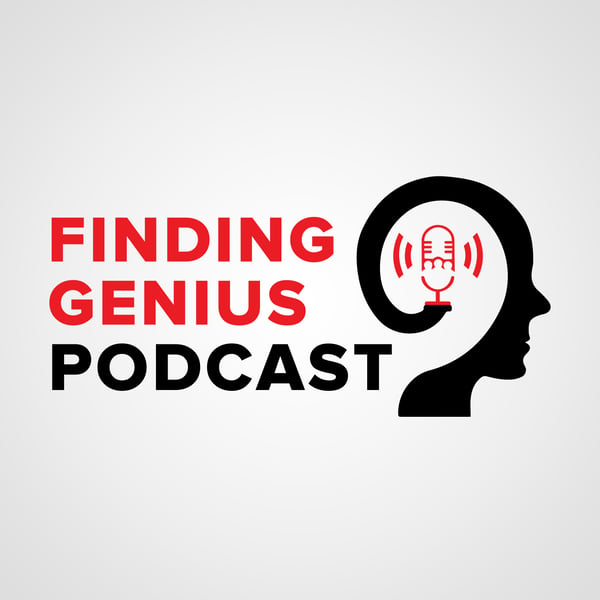Long, Beautiful Hair – Hasan Erbil Abaci, Assistant Professor at Columbia University Medical Center – New Discoveries, Hair Follicles and Hair Growth
Finding Genius Podcast
Richard Jacobs
4.4 • 1K Ratings
🗓️ 9 August 2019
⏱️ 34 minutes
🧾️ Download transcript
Summary
Hasan Erbil Abaci, Assistant Professor at Columbia University Medical Center, delivers an extensive overview of tissue engineering, specifically in regard to hair follicles.
Abaci has published his work in many areas of scientific research including the following: Tissue engineering of human hair follicles using a biomimetic developmental approach, Human Skin Constructs with Spatially Controlled Vasculature Using Primary and iPSC-Derived Endothelial Cells, Human-on-a-chip design strategies and principles for physiologically based pharmacokinetic/pharmacodynamic modeling, and many more.
Abaci discusses skin, a very complex organ composed of many different components that goes much deeper than simply the dermis and epidermis we typically think of. He talks about how hair follicles are connected, and how they are very complex organs themselves. Abaci describes how hair follicles function and how they communicate with other tissues in the skin, such as the blood vessels, for example. He explains how cells within the skin system can signal, and how tissues regenerate. Abaci talks about hair follicles, in regard to their growth cycle, and how this process requires newly formed blood vessels and a custom supply of blood.
Abaci explains the geometry. He explains in detail how they work with their samples in the lab, providing information on their use of 3D printed molds with hair follicle extensions embedded. He discusses the hydrogel that forms around the hair follicle-like extensions, and how they work with this process to explore the open channels that now have the geometry of actual hair follicles.
Abaci discusses what we know and don’t know about the chemical and physical signaling within the body. But if researchers can decipher how some of these processes work it may be possible to recreate signals in vitro, then scientists will have insight into how to grow hair follicles efficiently—in vitro. And as Abaci explains, this—is the crux of true tissue engineering.
Transcript
Click on a timestamp to play from that location
| 0:00.0 | You're listening to the Future Tech Podcast with Richard Jacobs. |
| 0:09.0 | Future Technologies such as Artificial Intelligence, |
| 0:11.8 | Stem Cells, 3D printing, gene editing, |
| 0:14.6 | Bitcoin, blockchain, the microbiome, quantum computing, virtual reality, and exploring space |
| 0:21.0 | are much closer than you might think. |
| 0:23.0 | In fact, many early versions of these technologies are in play right now, |
| 0:27.0 | and the companies that are using these technologies are the focus of this podcast. |
| 0:31.0 | My goal for you, the listener, is to learn from these |
| 0:34.4 | podcasts. You may very well learn something that may change the course of your life |
| 0:38.2 | for the better. Steer you towards a new career or give you insight into |
| 0:42.4 | addressing a thorny medical problem. |
| 0:44.4 | Remember, this podcast and its content is informational and nature only. No medical, |
| 0:49.3 | tax, legal, financial, or psychological advice is being given. |
| 0:53.0 | If you've enjoyed the podcast, please listen, subscribe, like, and tell your friends about it. |
| 0:58.0 | Thank you. Hello, this is Richard Jacobs with the Future Tech Health Podcast. My guest is |
| 1:10.0 | Erbo Avasi, assistant professor at Columbia University Medical Center. |
| 1:14.0 | We're going to be talking about tissue engineering of human hair follicles using biomimetic, meaning mimicking biology, |
| 1:20.7 | purchase. So Erbo, thanks for coming. |
| 1:23.0 | How you doing? |
| 1:24.0 | Good, thank you Richard. |
| 1:25.0 | Thanks for inviting me and I'm very excited to be here on this part guest today with you. |
| 1:29.0 | Yeah, it's heard of people wanting to engineer skin, you know, 3D print skin, grow skin for burn victims, etc. |
... |
Please login to see the full transcript.
Disclaimer: The podcast and artwork embedded on this page are from Richard Jacobs, and are the property of its owner and not affiliated with or endorsed by Tapesearch.
Generated transcripts are the property of Richard Jacobs and are distributed freely under the Fair Use doctrine. Transcripts generated by Tapesearch are not guaranteed to be accurate.
Copyright © Tapesearch 2025.

